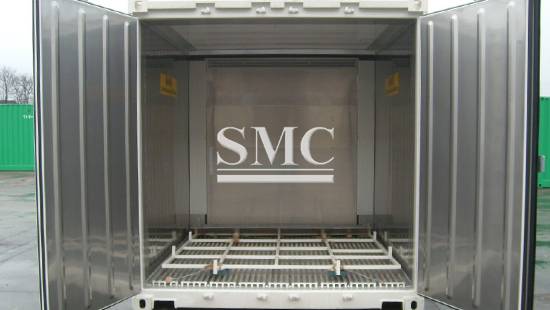With the rapid development of marine engineering, offshore containers as supporting equipment have also been rapidly developed, and offshore containers have gradually evolved from standard containers. A standard container refers to a 20-foot, 40-inch container with a maximum total mass of 30,480 kg. It is generally made of steel and is used to transport ordinary goods. Offshore container refers to a mobile unit with the ability to transport and operate in sea areas with a wave height of 6m and a total mass of no more than 25T. This unit is frequently used for the transportation and hoisting of cargo or equipment between marine fixed or floating equipment and ships.
Use environment and lifting method
Standard containers generally realize port-to-port transportation via container liners. If the standard container is placed in the liner compartment, the compartment guide post in the compartment can be used to prevent the box from moving; if the standard container is placed on the deck and stacked in several layers, stacking fixtures should be used between the upper and lower containers They are connected, and the corner fittings of the container and the tie-rings on the deck are tightened by tie rods.

In port terminals, standard containers are usually lifted by quayside container cranes or terminal container cranes, which are connected to the four corners of the container by the twist lock device of the crane and then lifted vertically. Because the port climate is generally mild and there is no collision when standard containers are hoisted, the environment for use is relatively safe.
Offshore containers are usually placed on the deck of a supply vessel in the offshore oil industry, without being tied up, and are directly exposed to the marine environment. Offshore containers are hoisted at a single point. They are often lifted to oil platforms under severe sea conditions. Each part of the container body is subject to greater impact and is easily collided with adjacent containers or hulls. Therefore, the structural strength of offshore containers is relatively high. , Generally, the spreader is permanently assembled on the box, and certain protection devices are required.
Offshore containers usually do not have corner fittings, even if they have corner fittings, they are not allowed to be used for offshore lifting operations. During transportation, offshore containers are not allowed to be stacked on ships. They are only allowed to be stacked on offshore or shore facilities, and generally do not exceed two layers.
Guest contributors are welcome at the Alloy Wiki.It is a weekly wiki and guide on alloy information and processing technology, while also about the vast array of opportunities that are present in manufacturing. Our team of writers consists of a Machining Material Supplier / Machinist / Tool and Die Maker, a Biomedical Engineer / Product Development Engineer, a Job Development Coordinator / Adjunct Professor, and a President and CEO of a manufacturing facility.
Link to this article:The Difference Between Standard Containers and Offshore Containers
Reprint Statement: If there are no special instructions, all articles on this site are original. Please indicate the source for reprinting:Alloy Wiki,thanks!^^


